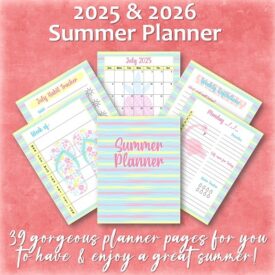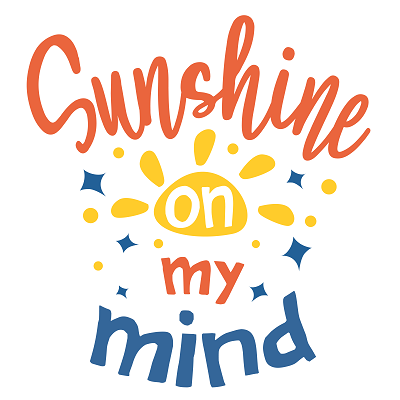 With the number of overweight and obese people rising every year, being in shape has become a desirable goal for more people. There are so many different workout programs, diet options, gym choices, and little tips and tricks available now that you would think more people would be in shape.
With the number of overweight and obese people rising every year, being in shape has become a desirable goal for more people. There are so many different workout programs, diet options, gym choices, and little tips and tricks available now that you would think more people would be in shape.
But they’re not. This is often because people will walk into a gym after New Year’s Day, do some random exercises with no plan involved, and after a few weeks, just fall off of their routine and never come back. That’s why it’s so important to have a well-developed workout plan.
Define Your Fit Body Goals
When it comes to getting in shape, not everyone is going for the same goal. There’s no good one-size-fits-all approach when it comes to fitness, but rather tons of different body types that people might be going for.
Some people might want to put on weight, while others might be looking to lose pounds. Some might just be looking to maintain where they’re at. When it comes to formulating a good workout plan, you have to have this clear goal in mind, so that you can create a plan that’ll get you there.
For example, some people might want to bulk up and put on more muscle before summer comes around. These people won’t have nearly the same workout plans as someone who’s trying to cut down on their weight.
You should also have a clear idea of what you want to do specifically when it comes to putting on or taking off weight. For example, when it comes to putting on weight, you can either be bulking or just gaining muscle.
Bulking is just getting larger in general, not necessarily retaining the same body fat percent. By putting on muscle, you want to stay at a low body fat percent, but lift weights to put on some more muscle.
The same idea applies when you’re thinking about losing weight. There’s a significant difference when it comes to workout routines if you want to cut, or if you want to just be thinner.
When people cut, they’re shedding their fat while retaining their muscle, giving them a much more toned look. However, by just getting thin, you focus almost entirely on weight loss and not as much on lifting weights.
Having a clear goal is key for any good workout plan, because there’s no way you can create a map if you don’t know where you’re supposed to be going. Generic fitness advice isn’t recommended, since everyone has a different starting point with their body, and everyone has a different goal.
These goals can get as specific as a certain body fat percentage or a certain weight, or as general as just looking good or being able to fit into a smaller swimsuit. No matter what your goal is, you need to be sure it’s something specific and clear, so that you can map out the best workout program possible to suit your needs.
Readymade Fitness Plan Versus Creating One from Scratch
When you’ve decided on your goal, you can start to decide how you’re going to approach it. Deciding what kind of plan you’re going to use in order to get to your goal is important, because it needs to be something that you can reasonably do and something that, if you follow it, will help you attain your goal.
There are two large groups of plans out there: premade plans, and plans that you develop yourself. There are tons of premade workout plans, all focusing on different workout regimens for different goals.
They even come in a variety of forms, from all text based, to audio, and even video based. All of these suit the personal needs of whoever’s using them, though there are some advantages and disadvantages between them.
When it comes to videos, you’ll typically need a home gym setup to use them. It’s not exactly convenient to go running around your gym with your phone in your hand trying to keep up with the workout.
Video based workouts also sometimes cost money if you’re getting them as DVDs, but there are some free online videos out there. Videos do give you the advantage of seeing exactly how the workout is supposed to be done.
Text and audio workout routines are often more portable, and a lot more accessible for either little or no cost whatsoever. Creating a workout on your own allows you to craft a workout entirely suited and customized to just you.
You get to pick the days you work out, what you do on those days, how much you do it, and so on. However, with all of these options and customizations, it can be a bit tricky to create a plan that works for you.
This is especially true if you’re new to working out or aren’t really experienced with making a good workout plan. You might not know what workouts to include, or which exercises are even available.
You might not know how often you should be working out or for how long, or even what you can handle. With all of this uncertainty, it’s important that you look at a few premade plans first, and then restructure a workout like that to fit something more suited to you.
However, if you are well versed in fitness, then creating your own workout is like a dream. You know exactly which exercises you like and which ones you don’t. You likely know what works best for you, how it all fits into your schedule, and so on.
This option gives people like this way more flexibility to design something that will suit their needs best. Overall, both options are solid if you know how to use them. If you’re following a flawed premade plan, you’ll struggle with getting the results you want.
If you don’t create a good workout plan, you won’t see much fruition of your work. But if you use these correctly, you should be able to get to your goals. You might even want to hire a personal trainer to help you get started on the right path.
Committing to the Time It Takes to Improve Your Body
There’s one common excuse that almost everyone gives for falling off of their workout plan: time. Every year, thousands of people set out to finally get in shape, and they’ll set their goals and have their plan, but after a few weeks, they miss a day and never come back.
They’ll usually pin it all on one thing – that they just didn’t have the time. It just wouldn’t fit in their schedule – they’re too busy. Time commitment is what ends so many attempts at getting in shape.
One reason that so many people have trouble following their workout regimen is that they put too much on their plates. Someone might already be working full time in addition to other obligations and try to fit in some 4-day per week workout schedule that involved 2 hours a day of working out.
It’s all well and good at first, but they quickly realize that it’s just taking up way too much time in their schedule. When you’re creating your workout plan, you need to be honest with yourself.
If you have a lot of stuff to do, don’t try to fool yourself into thinking that you can cram a ton of extra exercise into your schedule. You will see way more results in the long run if you stick to a modest exercise routine than you ever will with an intense regimen that you can’t keep up with.
Many months or years of working out for half an hour a day will get you in shape, but five days a week for two hours a day for only two weeks won’t get you anywhere. At least not in the long run.
You need to make sure you have a workout that’s feasible, but you should also try to make sure it’s actually a worthwhile workout. If your workout only consists of about 15-20 minutes here and there each week, sometimes it’ll feel like it’s not worth even going.
Who wants to make a 15 minute drive over to a gym so they can work out for that short of a time? You want to make sure you’re actually getting the most of each workout when you go, so try to get in somewhere around half an hour to an hour each time you show up at the gym.
This not only yields better results, but it also makes you feel like you’re actually making progress. That sense of making progress is just as important as the actual results, because not feeling good in either category can drive someone to quit out on their routine.
You should also try to move your schedule around in such a way that you actually have a free slot in the day to work out. This might mean waking up a bit earlier, or going to bed a bit later.
Many gyms these days are open 24/7, so you can go in there as early as 4 or 5 A.M. to get in a quick morning workout or even as late as 10 P.M, to work out before you head off to sleep.
These workouts actually have some decent advantages, as well as working better in your timeframe. There shouldn’t be any excuse for not being able to work out at some point in the day.
Gym Versus Home Workouts
The only way you can successfully work out without bodyweight exercises is by having access to workout equipment. There are a number of places and ways you can work out, but there is one major divide among fitness enthusiasts: gyms, and home.
Each one has their own unique benefits and drawbacks, and either one might suit you more or less. Once you decide where it is you’re going to be working out, you’ll be all set to get started with your regimen.
When it comes to working out at home, there can be some initial complications. First, you essentially need to find a room that you can dedicate to a workout room, unless the equipment you buy won’t take up too much space.
On that note, you’ll need to buy the proper equipment, which can be expensive, bulky, and somewhat difficult to transport and put together. You can always purchase space saving equipment, too – those that fold up and stash away out of sight.
However, once you have a home gym completed, it can be quite nice. It’s entirely customized to what you want in a gym. If you’re new to working out, you never have to feel as if someone else is judging you, because you’re likely the only one there.
You’ll never have to wait for a machine to be open, or worry about someone using a set of dumbbells you’re waiting to use. The music playing or TV channel is whatever you want it to be.
Most importantly, it’s always accessible whenever you want to use it. When it comes to gyms, there are many different kinds, each with differing equipment, costs, and general personalities.
You’ll find gyms that are really fancy, and some that are strictly barebones. Some gyms attract a more easygoing crowd, while others are homes to serious weightlifters and gym rats.
One downside to a gym is that you’ll always have to pay for a membership. With a home gym, it’s expensive at first, but from then on it’s all free. With a gym membership, it can be as low as $10 per month, but that fee never ends.
Some gyms have limited hours, so you’ll have to work it into your schedule a bit more carefully. You’ll also have to travel to your gym, even if it’s only a few minutes away. Sometimes this can hurt your motivation.
Gyms also have their fair share of benefits, though. At a gym, you’ll find that there’s tons of specialized equipment you may have never even heard of, and hopefully plenty of space to go around.
There’s also no serious commitment when it comes to a gym. If you don’t like it or you stop working out, you can just cancel your membership. Some have annual fees or contracts, but you can choose a gym that allows month-to-month plans if you prefer.
With a home gym, once you’ve bought and moved in all of the equipment, it can be hard to get rid of it all. Most people start off at just a regular gym to see if they enjoy working out, and then might move up to a home gym if they decide it’s right for them.
Tracking Your Progress and Leveling Up
A very serious problem that many people have when it comes to working out is the feeling that they’re not making progress. When you’re working out frequently, it can be hard to feel as though you’re making any kind of genuine progress.
You see yourself in the mirror almost every day, and so the changes you’re making are so gradual that you almost don’t notice them at all. This can turn out to be discouraging to a lot of people, and might even drive them to stop working out altogether.
First, there’s one thing more people need to realize. When you start working out, you won’t see results after just a few days or sometimes even a month of working out. It simply doesn’t work that way.
It takes some time to build up your muscles or break down fat. People set expectations way too high when it comes to workout routines, as if they’ll be able to just lose all their fat in 3 weeks.
That’s usually not the case. Another reality about working out is that there will be times when you hit plateaus, where some weeks your weight will remain the same instead of losing a certain amount.
Next, there are plenty of other ways you can track your progress without just looking in the mirror or stepping on a scale. For example, if you’re working on building up muscle and getting stronger, you’ll be able to track your progress easily by the amount of weight you can lift.
If, when you first started out, you were bench pressing 115 pounds, you’ll know you’ve improved once you can handle 135 pounds. Even if you don’t look much more ripped, you’ll know that you’re making positive progress.
Many people like to take progress pictures to help them along their journey. It’s recommended that you take some frontal and profile view pictures of yourself, and then check back in on it every few months.
By seeing the pictures side by side, you’ll get a much better idea of how much you’ve changed than you do just checking in the mirror each day. When you try to view your progress that way, you won’t notice it, since the daily changes will be so minute.
Some people have employed the use of technology in order to better track their fitness efforts. One of the most popular brands, FitBit, offers tons of wearable technology that helps you track your weight and exercise on graphs, which can often give you a very clear view of what you’ve been accomplishing.
You’re able to set personalized goals with them, and can view your progress from your phone or online. This can really help motivate someone to keep on working at their routine.
You can also use a gym tracker or at home tracker to give you statistics on your BMI, bodyfat measurements, muscle and more. Don’t just go by the scale if you tend to lose motivation, because your bodyweight will fluctuate as you work to achieve your goals.
You can order an at home scale and some calipers to track fat loss and muscle toning as you work out. You’ll know which exercises are working to move you closer to your goal and which are simply a waste of time.










